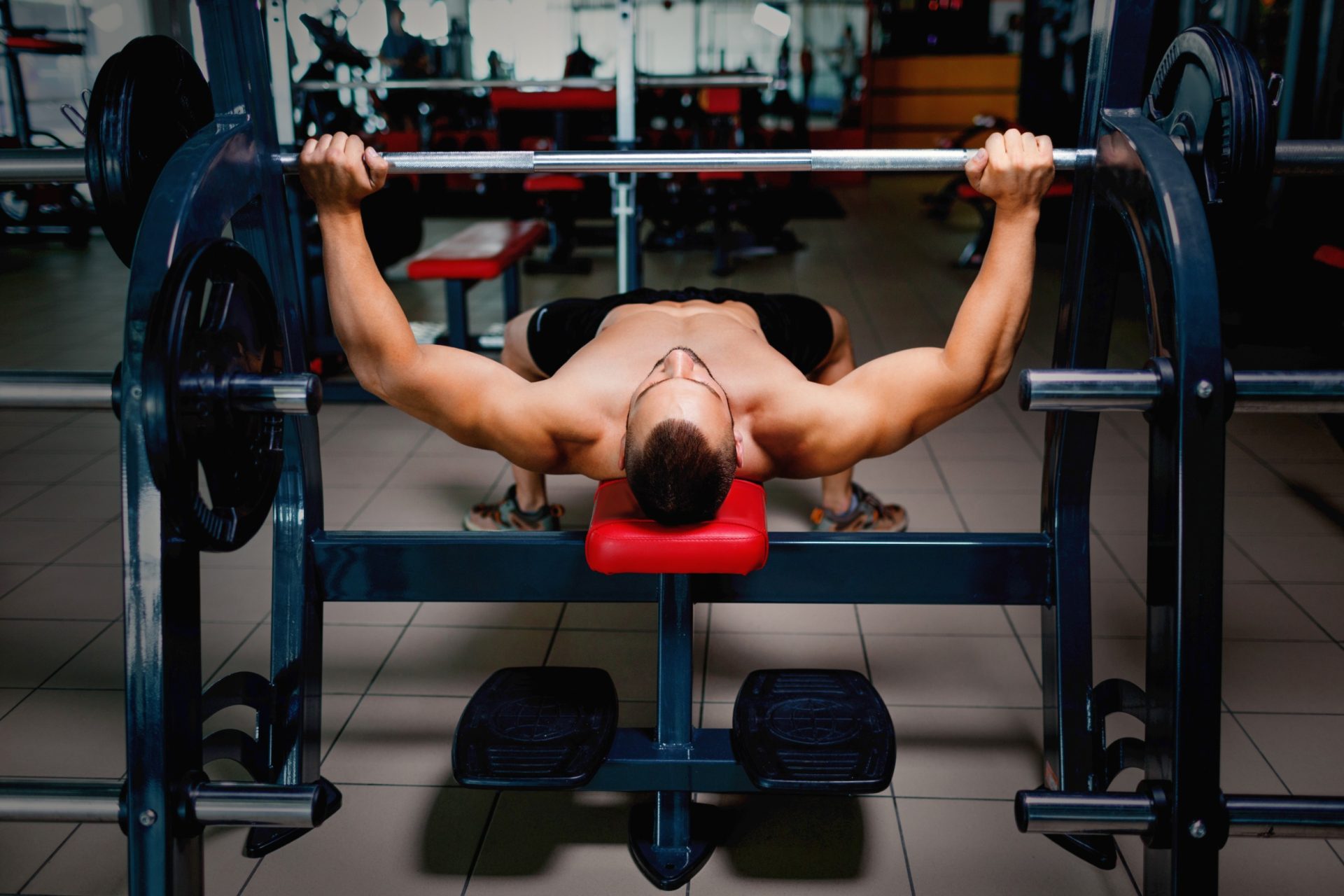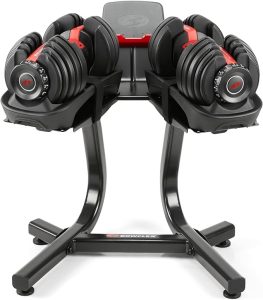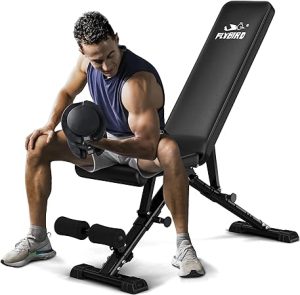Chest day is the best day, isn’t it?
Whether you’re a bodybuilder or just looking to build a great beach bod, hitting those pecs on the reg helps you develop a well-rounded chest that looks fantastic while providing functional benefits in your everyday life.
One of the best ways of training your chest is by incorporating compound chest exercises into your regular workout routine. Check them out below!
These are the 5 Best Compound Chest Exercises of All Time
Are you ready for the best exercises for your chest compound workout?
Without further ado, here are our top picks!
-
Incline Barbell Bench Press
The bench press is ostensibly the most popular lift in the weight room, reigning supreme in every athlete’s chest day programming; and what’s not to love?
This bad boy is by far one of the best chest compound exercises, providing ample muscle activation to the pectoral muscles, serratus anterior, anterior deltoids, and triceps too.
According to the International Journal of Environmental Research and Public Health, converting your flat bench press into an incline press “produces greater activation of the upper portion of the pectoralis major.” So, for well-rounded results, incorporate the incline, flat, and decline bench press variations into your routine.
To perform the incline barbell bench press with proper form:
- Grab a weight bench and adjust it to approximately 30-degrees of incline.
- Rack a barbell and load it to the desired weight using weight plates.
- Sit down and reach up to grip the bar with a slightly wider than shoulder-width grip.
- Pinch your shoulder blades, inhale, and exhale as you unrack the bar.
- Position the bar over your sternum, then slowly lower it to your chest.
- Lightly touch at the bottom, pause, and press the bar back to the starting position.
- Squeeze your pecs, then repeat the movement as needed.
-
Chest Dips
Dips are an absolute bodyweight beast, requiring very little equipment to provide major muscle activation throughout the upper body. Common variations include the bench dip, which uses a weight bench, bar dip, which uses a dip station or parallel bars, or ring dip, which uses gymnastics rings.
Studies show that the bench dip is most suitable for beginners, the bar dip works as a progression “due to the higher peak muscle activations,” and the ring dip ranks as the most advanced, requiring incredible strength, stability, and coordination to perform.
To perform the bar dip with proper form:
- Stand between two parallel bars or at a dip station.
- Grip the bars/handles with a neutral grip and lift your feet off the floor. You may consider bending your knees and crossing your ankles behind you so your feet do not touch the floor during the rep.
- Angle your torso forward to increase muscle activation in the chest.
- Slowly lower your body down by bending the elbows.
- Continue until your elbows form 90-degree angles.
- Pause, then push yourself back to the starting position.
- Repeat as needed.
-
Push-Ups
Dips rank among the best bodyweight exercises for your chest and in general, but nothing’s quite as versatile and effective as the good ol’ push-up. This calisthenic classic targets muscles throughout the entire body, including your chest, shoulders, arms, core, and legs.
The standard push-up is a tried-and-true chest day staple, but you can tweak where you’re getting the most muscle activation by using any of the many push-up variations, including close-grip, diamond, deficit, incline, decline, tempo, spider, and more.
To perform the standard push-up with proper form:
- Get down on the floor.
- Place your hands on the floor. Your wrists should be directly below your shoulders.
- Step your feet back so they are together with the balls of your feet touching the floor.
- Maintain a neutral neck and spine by keeping your eyes forward on the floor.
- Leading with your chest, slowly lower your body to the floor by bending your elbows. Keep the elbows tucked into your torso as you move (no elbow flare!).
- Continue until you lightly touch the floor with your chest.
- Pause, then push your body back up to the starting position.
- Repeat as needed.
Variations of Push-ups:
Diamond Push-ups: Bring your hands closer together under your chest, forming a diamond shape with your thumbs and index fingers. Diamond push-ups primarily engage the triceps and inner chest muscles. They can be more challenging than regular push-ups due to the increased emphasis on these specific muscle groups
Spider Push-ups: As you lower your body towards the ground in a push-up motion, simultaneously bring one knee toward the corresponding elbow on the same side of your body. Spider push-ups target the chest, shoulders, triceps, and engage the core and hip flexors due to the knee-to-elbow movement.
Deficit Push-ups: Deficit push-ups are a variation of traditional push-ups that involve elevating your hands on a raised surface, creating a larger range of motion and adding an extra challenge to the exercise
Tempo Push-ups: Tempo push-ups involve controlling the speed or tempo of each phase of the push-up movement and is usually expressed as a series of numbers representing the duration of each phase of the movement (e.g., 3-1-3). In this scenario, you would descent for 3 seconds, pause at the bottom for 1 second, and the ascent back up for 3 seconds. You can change the tempo to your liking; another common one is the 4-2-4 Tempo
-
Incline DB Press
Barbells are great when it comes to compound chest movements, but compound chest exercises with dumbbells can be equally as great, if not better. That’s because trading the trusty barbell for a pair of dumbbells allows you to do exercises unilaterally, or with one arm at a time.
Dumbbells often allow for an increased range of motion, as is the case with the incline dumbbell press, which increases your muscles’ time under tension and ultimately results in more work per rep. I mean, who doesn’t want to get more work done in less time, right?
To perform the incline DB press with proper form:
- Set up your bench with approximately 30-degrees of incline.
- Grip a dumbbell in each hand using a neutral grip, sit down, and rest the weights on your upper thighs.
- Push the weights into the air using your legs so they wind up directly over your chest. Your arms should be nearly fully extended save for a slight bend in the elbows.
- Slowly lower the dumbbells by bending your elbows.
- Continue until your hands are next to your chest.
- Pause, then press the weights back to the starting position.
- Squeeze your pecs, then repeat the movement as needed.
-
Landmine Press
The landmine press is one of the most useful compound exercises for chest and triceps, but it’s also excellent for developing great shoulder stability due to the overhead movement pattern it employs.
To perform the landmine press with proper form:
- Set up your landmine base with a loaded barbell and position yourself at the end.
- Grip the barbell sleeve in your right hand at shoulder-height as you bring the right knee to the floor. Enter a half-kneeling position with the right knee down and left knee at 90-degrees.
- Keep your chest tall, back flat, and core tight as you press the barbell overhead.
- Continue until your elbow reaches the lockout position.
- Pause, then slowly lower the bar back to the starting position.
- Repeat as needed, then switch sides and repeat the set with your left arm.
These 3 Pieces of Workout Equipment Can Really Help
1. Bowflex SelectTech 552 Adjustable Dumbbells and Stand
2. FLYBIRD Adjustable Workout Benches
3. AERLANG Push Up Board
The Benefits of Compound Movements
The main benefit of using compound movements in your workout is because they involve multiple joints, thus recruiting numerous major muscle groups to perform each exercise.
According to Frontiers in Physiology, “[resistance training] programs involving [multi-joint] exercises appear to be more efficient for improving muscle strength and maximal oxygen consumption” compared with “single-joint” or isolation exercises.
That means you can get more work done in less time, making it perfect for the time-crunched individual in need of a great workout that doesn’t require hours of daily commitment.
Compound Movements vs Isolation Exercises
So, are chest isolation exercises, and isolation exercises in general, for the birds?
Well, not exactly. As with all things in fitness, it isn’t so clear-cut. While isolation exercises have less impact in terms of where you’re receiving activation, they’re still quite useful for truly reaching the full potential of each muscle group.
The best chest isolation exercises involve minimal assistance from other muscle groups, letting you really hone in on the chest muscles and focus all your energy there. They include:
- Cable crossovers
- Dumbbell/cable flyes
- Pec deck machine flyes
For all-purpose gains and general fitness, you may be fine allocating your time strictly to compound movements, but working in isolation exercises provides that extra oomph for athletes, bodybuilders, and other individuals that really want to round out their fitness game.
So, don’t sleep on isolation exercises! Everything can be useful in fitness if used properly.
A Great Chest Compound Workout
We have the pieces of our puzzle, but how does it all look when we step back and see the big picture? Here is a sample workout involving the compound exercises we’ve outlined above:
- Incline barbell bench press: 3 to 5 sets of 6 to 12 reps
- Chest dips: 3 to 5 sets of 10 to 15 reps
- Incline dumbbell press: 3 to 5 sets of 6 to 12 reps
- Push-ups: 2 sets of 10 to 15, 1 set to failure
To use this workout for building muscle, make sure you use weights that are around 60% to 80% of what you’re fully capable of lifting, or your “one-rep max.”
For strength gains, cut the number of reps in half and lift as heavy as possible. Remember— “as heavy as possible” means weight you can actually lift. You should be challenged on every rep, not failing to complete even a single rep.
Incorporating Compound Chest Exercises into Your Routine
Compound chest exercises make a great addition to full-body strength training days or workout splits that use the chest and triceps, as these muscles form a synergistic pair. That means most chest movements also involve the triceps to some degree, as both are crucial to performing pushing movements in fitness and in everyday life.
No matter when you choose to perform your compound chest exercises, make sure you allow for a full recovery before doing them again. According to Muscle & Nerve, your pectoralis major and triceps brachii need approximately 48 hours before returning to their “peak torque values.”
Stretching and Activation is Important for Chest Workouts Especially
Stretching is always important for minimizing your risk of injury, but you really don’t want to skimp on the chest warm-ups. A pec tear or ruptured pec muscle is no joke and could lead to some serious complications, so it’s best to avoid it altogether by spending some time stretching before getting to work.
Start your workout with light cardio, dynamic stretches, mobility exercises, and even a few light sets of your compound chest exercises. Introducing light and easy movements before your working sets helps increase your heart rate, improve blood flow, and lengthen the muscles you’re about to exercise, making them more resilient and less likely to suffer an injury.
Protect Your Back and Shoulders When Doing Compound Chest Workouts
Compound chest exercises predominantly hit the chest and triceps, but the shoulders are the unsung heroes that enable many of the movements needed to perform each exercise properly.
You’ll want to check in with your form to ensure your back and shoulders are protected during each exercise so you’re not inadvertently increasing the amount of shear force you place on the precious shoulder joints or spine.
Maintaining a neutral neck and spine goes a long way. Make sure your back is straight at almost all times during the above exercises. Flexing your core and keeping it engaged is also key. The only time you may get away with a little curvature is by incorporating a slight (and we mean slight) arch in the back during the bench press.
For the shoulders, practicing proper scapular retraction, or keeping the shoulder blades pinched, helps big time.
For more personalized tips, consider working with a certified personal trainer or other qualified fitness professional. It never hurts to get the guidance and supervision from a pro!
Zoppler is reader supported and may earn affiliate commissions from links on this page. We support and believe in all the products and services we promote and are affiliated with.














